Leica M Monochrom Digital Rangefinder Camera - Page 29a
Index of Thorsten Overgaard's user review pages on Leica M9, Leica M9-P, Leica M-E, Leica M9 Monochrom, Leica M10, Leica M10-P, Leica M10-D, Leica M10-R, Leica M10 Monohcrom, Leica M11, Leica M11-D, Leica M 240, Leica M-D 262, Leica M Monochrom 246, Leica SL, Leica SL2, Leica SL2-S, Leica SL3, Leica SL3-S as well as Leica TL2, Leica CL, Leica Q, Leica Q2, Leica Q2 Monochrom, Leica Q3 and Leica Q3 43:
Leica M Monochrom Type 246
By: Thorsten Overgaard. November 8, 2016. Latest edited May 25, 2019.
Add to Flipboard Magazine.
The Leica M 246 Dynamic Range
For me, the Leica M 246 turned out to be a Leica first and a Monochrom, well, not so much. I found it mostly harmless, got over it and traded it off for a lens
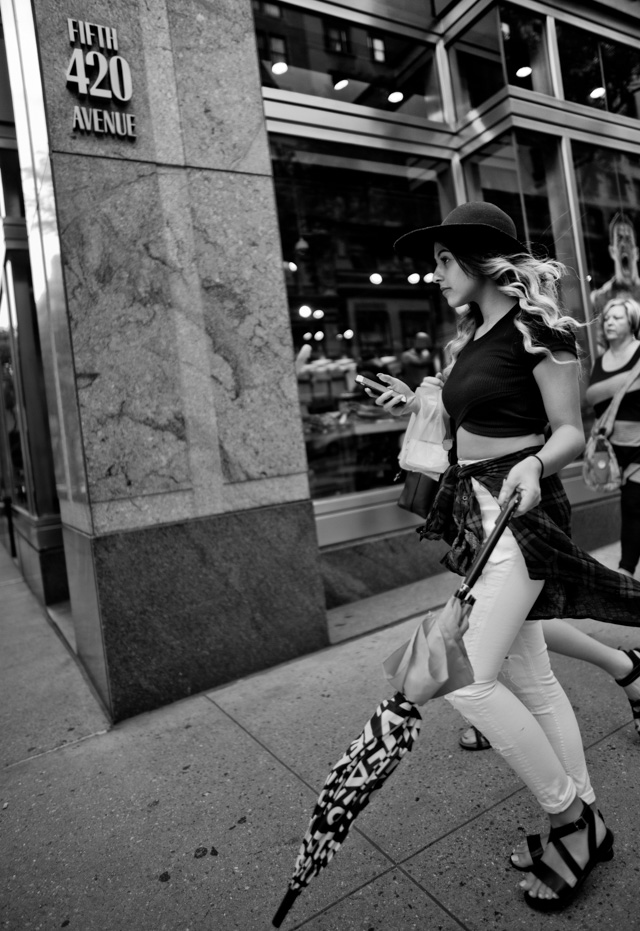
Flying on Fifth Avenue in New York. Leica M 246 with Leica 21mm Summilux-M ASPH f/1.4. © 2016 Thorsten Overgaard.
If you have been following my trails for a while, you will have noticed that I often don't write about new cameras ‘til after a while. I learned that although people ask my opinion, what matters to me is that I write about things I use and have experience with, and that obviously takes a while.
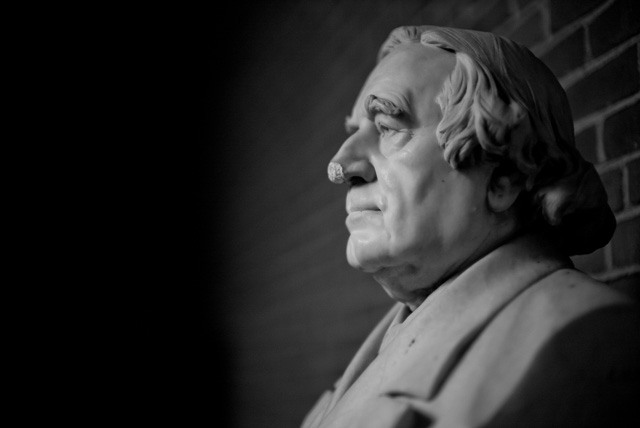
A statue of Robert Collyerd in "Church of the Messiah" in New York. Leica M 246 with Leica 50mm Noctilux-M ASPH f/0.95. © 2016 Thorsten Overgaard.
I just bought one!
My power as an influencer is great. People buy the cameras and lenses I like—but also the ones I don't like. I've gotten several e-mails where people said, “I read your articles on the Leica M 246, so I bought one!”
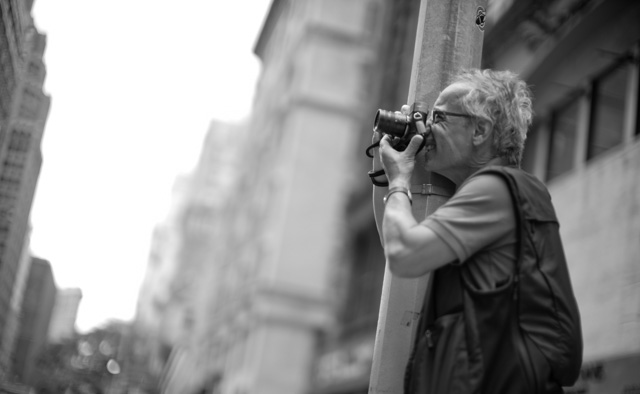
Out and about in the Overgaard Monochrom Workshop. Leica M 246 with Leica 50mm Noctilux-M ASPH f/0.95. © 2016 Thorsten Overgaard.
Wait a moment … that's not what I wrote!
I don't want to be a judge on anybody else's camera. Think for yourself. Mostly what I do is I try to inspire, and whenever someone tells me they went out to photograph, I feel a sense of accomplishment.
I don't consider myself a reviewer, but rather a user who writes to inspire, and to share knowledge on how to get things to work.
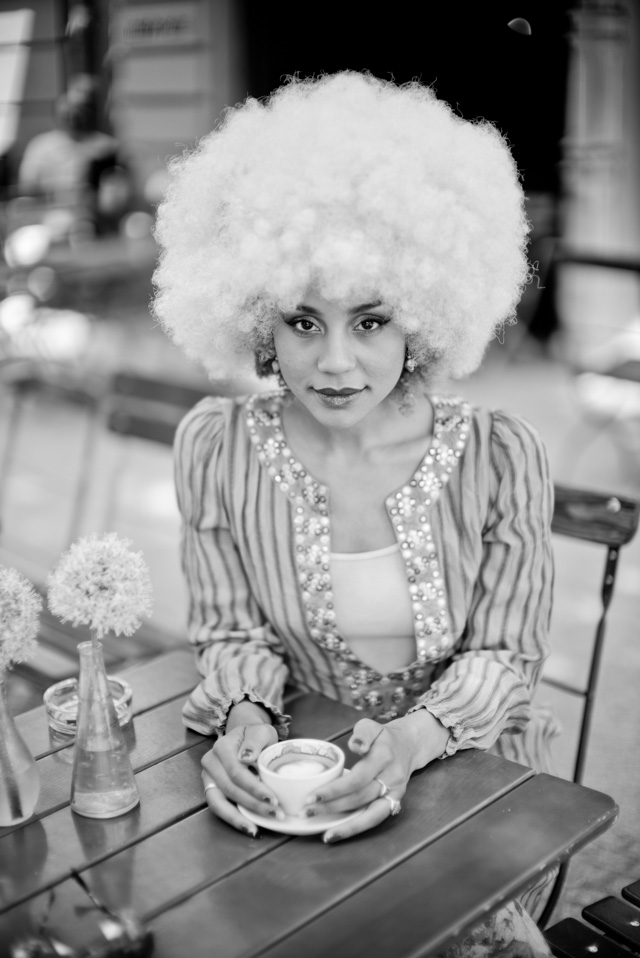
Leica M 246 with Leica 50mm Noctilux-M ASPH f/0.95. © 2016 Thorsten Overgaard.
| |
|
|
|
|
|
| |
Join the New Thorsten Overgaard
Photography Extension Course
"My wife game me this course and I absolutely love it.
Now I think more in light and shadows. Used a lot of the techniques on a recent trip and
my photos have improved a lot. Well done, Thorsten!"
S.N. (Mexico)
"I am happy with my purchase of the extension course. Well written, easy to understand"
K.D. (USA)
“I very much enjoy the incredible knowledge”
V.V. (United Kingdom)
"Addictive, beautifully and simplistically written. Just amazing. Cleared my concepts"
V.P. (USA)
"The extension course is the best course I read about photography (and I'm still at the beginning)"
M.S. (Luxembourg)
"I'm already in page 81 of the Extension Course, and your communication and words provoked a change in me at an aesthetic level that I felt but I couldn't explain"
C.L. (USA)
|
|
| |
|
|
|
|
|
| |
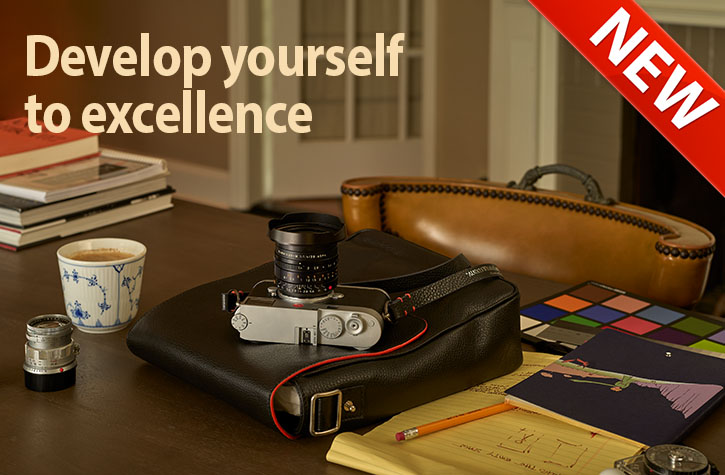 |
|
| |
|
|
|
|
|
| |
|
|
|
|
|
| |
New: The Digital Photographer's Extension Course
Learn the basics of photography with Thorsten Overgaard
I teach you the basics of photography in an easy-to-understand and step-by-step way that anyone from age 12 to 90 years can understand and easily apply. This extension course is for everyone from 12-90 years.
The intention with this extension course is to get you going in your photography adventure with lightning speed and inspire you to reach to new heights.
Enjoy!
Specially tailored for Leica and digital photographers.
The waiting list is over!
After a couple of years with a long waiting list, I have finally redesigned the course so I can handle the students interested in this course. Not only that. The number of pages has gone up from 120 to 340..!
You work at your own pace after you recieve the full package of material via mail. It works as PDF on computer, iPad, Kindle, or - if you like - make your own print.
More info ---> |
|
|
Join the Home School for
Leica and Digital Photographers
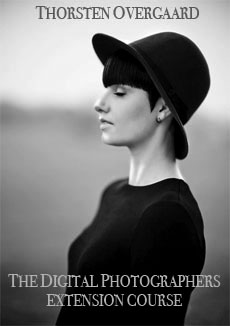
Only $998.00


Buy now. Instant delivery by mail.
ITEM #2140-0122 |
|
|
| |
|
|
|
|
|

Playing with water in Madison Square Park, New York. Leica M 246 with Leica 50mm Noctilux-M ASPH f/0.95. © 2016 Thorsten Overgaard.
What is monochrome, anyways?
Getting a Monochrom camera is not necessarily a matter of getting the most or the best monochrome tones. It's about narrowing down what you can do and giving yourself some obstacles to overcome. That's the game.
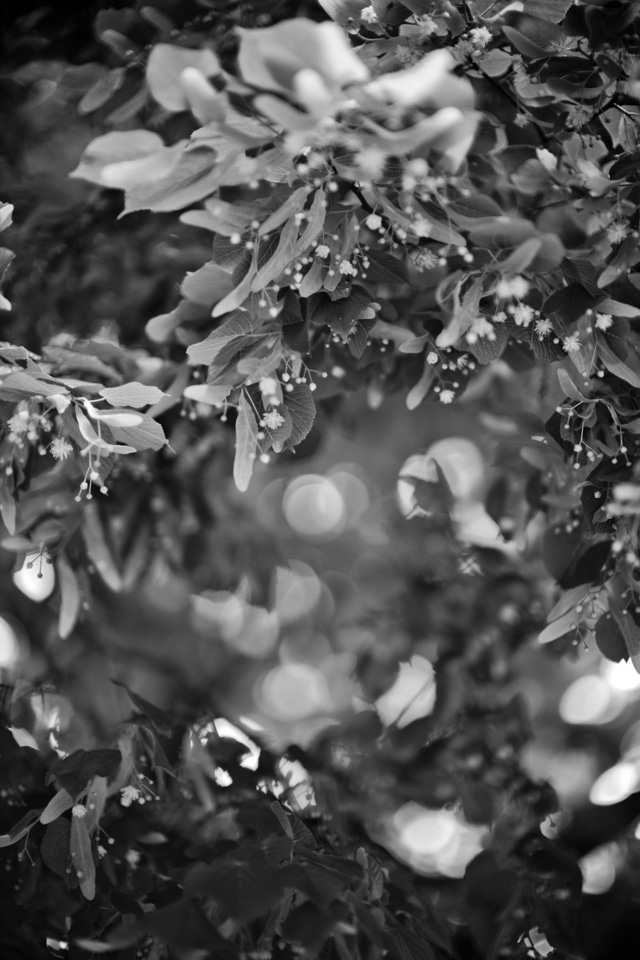 Bokeh and monochrome tones in Germany. Leica M 246 with Leica 50mm Noctilux-M ASPH f/0.95. © 2016 Thorsten Overgaard. Bokeh and monochrome tones in Germany. Leica M 246 with Leica 50mm Noctilux-M ASPH f/0.95. © 2016 Thorsten Overgaard.
If we scroll back the track to early black & white photography, it often was about getting the full range of monochrome tones into the frame. Defining shapes, light, reflections, textures, surfaces and emotions with a scale of monochrome tones.
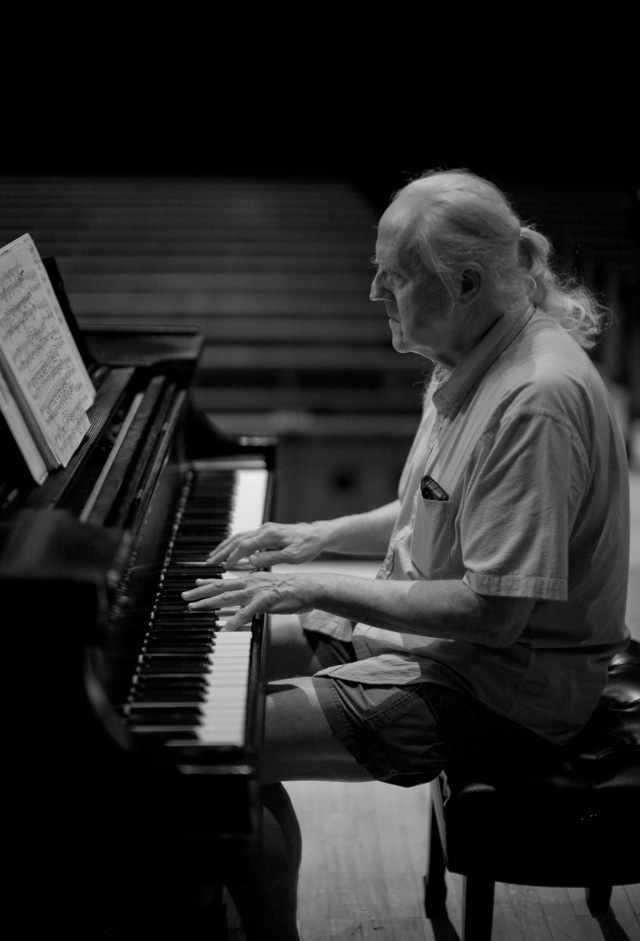
Preparing for concert in the church. Leica M 246 with Leica 50mm Noctilux-M ASPH f/0.95. © 2016 Thorsten Overgaard.
| |
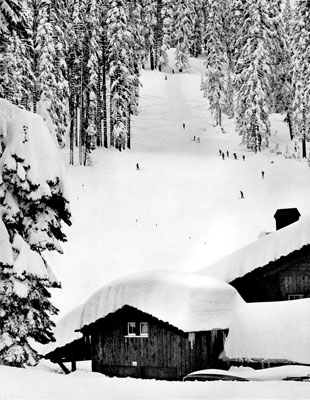 |
| |
Ansel Adams commercial photos for Yosemite |
| |
|
Some like to play the piano, others like to play the flute. For others it's the Fender. It's a tool to express emotions and it's the combination of the user, the message and the instrument that determines if the result sings or sucks.
Ansel Adams did a series of photos from Yosemite in the 1930's where the strength was that they didn't have much tonality (commercial photos for Yosemite as winter resort). I talked a lot about Ansel Adams and his understanding and use of the tonal range in the previous page.
If you browse through the last hundred years or so of famous black & white photographs, the tonality is often a non-issue.
Here's some of them.

Migrant Mother by Dorothea Lange (1936).

V-J Day in Times Square by Alfred Eisenstaedt (1945).
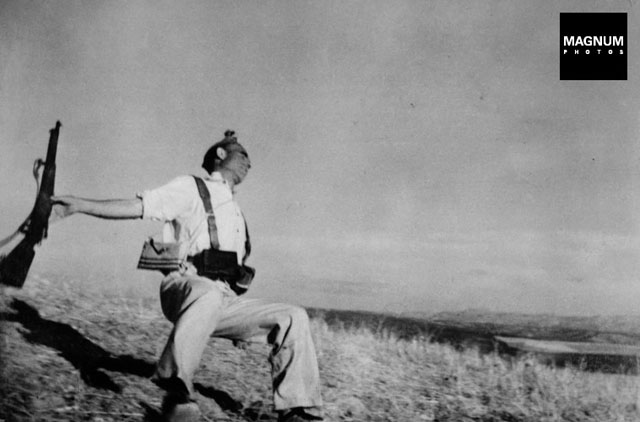
The Falling Soldier by Robert Capa (1936).
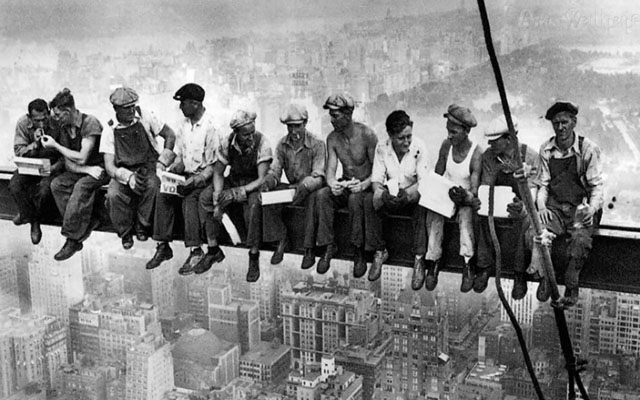
Lunch atop a Skyscraper by Charles C. Ebbets (1932).
| |
|
|
|
|
| |
Buy the new eBook
"The Freedom of Photographic Expression"
by Thorsten Overgaard |
|
| |
|
|
|
|
| |
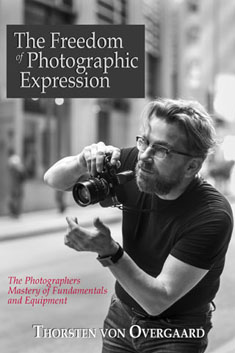
"The Freedom of
Photographic Expression"
eBook for computer, Kindle and iPad
October 2016 (268 pages) |
|
In this easy to read and apply eBook,
Thorsten Overgaard takes beginners and experienced photographers through the basics of controlling the light and the camera.
This book covers the technical side of photography from beginners level to semi-pro, features a number of photographs by Thorsten Overgaard and chapters on his philosophy on photography.
Only $148
| |
|
|
| |
Buy Now

Instant Delivery |
|
| |
|
|

|
|
| |
"I've bought the new book - made a start reading it - it is really interesting.
I know it's basic at the beginning but it isn't written in a patronizing way. I have been taking photographs for many years and have been lucky enough to be paid to take them for the last seven years; but it's always good to be taken back to the start"
P. S. (UK) |
|
""Really enjoy your writing and teaching"
D. K. (USA)
"I love your insights on photography."
D.B. (USA)
★
★
★
★
★
★ |
|
|
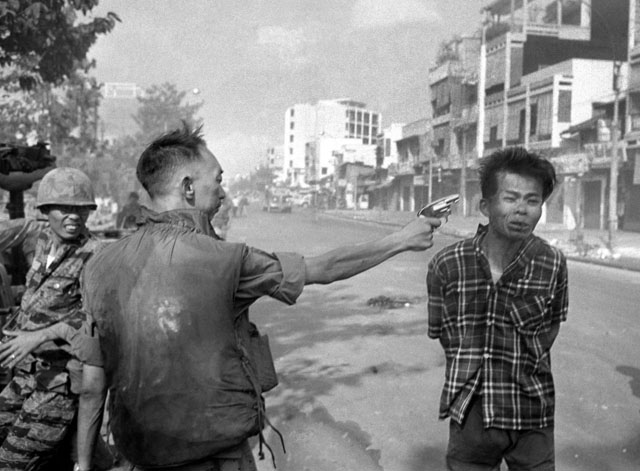
Nguyen Ngoc Loan executing Nguyen Vaan Lem by Eddie Adams (1968).

Here's one I actually have on my wall at home: Ernest Hemingway by Yousuf Karsh (1957) is one classic black & white photograph that actually has a great tonality, light and subject. © Yousef Karsh.
What is it that makes a great monochrome image?
That's up to you to determine, and if using the Leica M 246 Monochrom (or the more old-school Leica M Monochrom with CCD-sensor) gets your juices flowing, then it's a good thing.
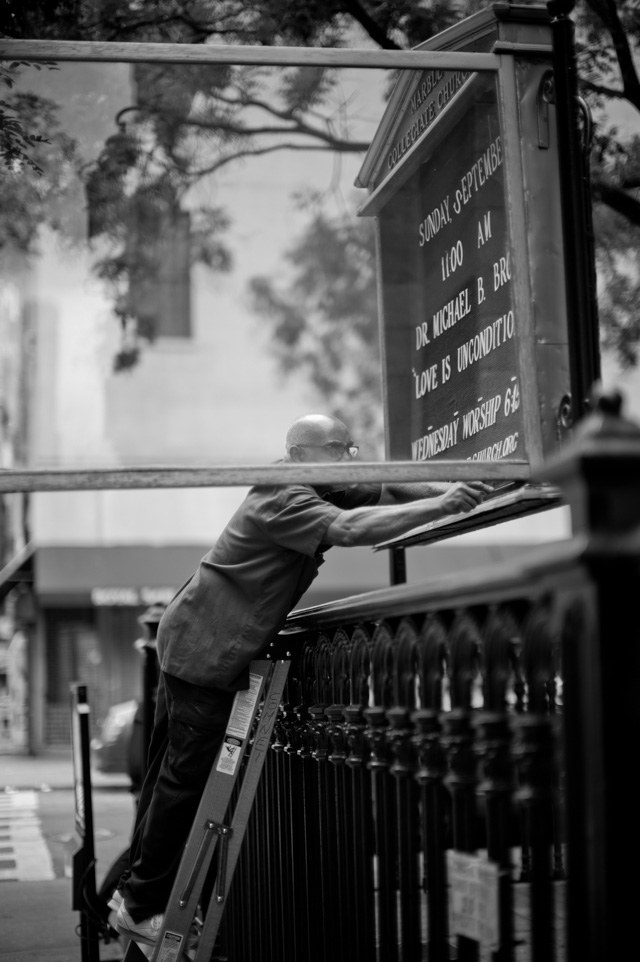
Wednesday Worship on 5th Avenue in New York. Leica M 246 with Leica 50mm Noctilux-M ASPH f/0.95. © 2016 Thorsten Overgaard.
Also, part of the Monochrom adventure is that many users in fact use NIK and other software to trick out their pictures. That's not very old-school black & white to do, but it works to some degree. Personally I don't like to use presets or filters. I find them being special effects and I tend to get tired of them after a week or two.

That's how you work it when you work in New York. Leica M 246 with Leica 50mm Noctilux-M ASPH f/0.95. © 2016 Thorsten Overgaard.
My ideal is to get my own look with just general adjustments in Lightroom. The picture should be close to finished when importing, and I'll use the Lightroom tools to make it sparkle 10-15% more. With the Leica M 246 I felt I almost HAD to trick the pictures out to make them look good. So that's the reason it never worked for me. The Leica M 246 turned out to be a Leica first and a Monochrom, well, not so much.
This is not a review. I'm not trying to show you the pictures that didn't work. I show what works, and in the case of the Leica M 246 it wasn't as many - or in the way - I wanted it to work for me.
Looking back, we had some great moment together, the Leica M 246 Moncohrom and I.
| |
|
|
|
|
| |
Buy the new eBook
"A Little Book on Photography"
by Thorsten von Overgaard |
|
| |
|
|
|
|
| |

Order now - Instant delivery.
More info
★
★
★
★
★
★ |
|
It's a humorous understatement to call this
new eBook by Thorsten Overgaard for
"A Little Book on Photography".
It's a grand book, a history lesson, life experience, a biography and poetry book and brilliant photo book!
All in one beautiful package of 180 pages
to fire you up and get you to love
photography ... unconditionally!
"A Little Book on Photography"
eBook for computer, Kindle and iPad.
New release March 2017.
Intro price only $47 - 180 pages.
| |
|
|
| |
Buy Now

Instant Delivery |
|
| |
|
|

|
|
| |
|
|
That Monochrom Feeling
It's also part of the story that I can get into the mood and enjoyment of just shooting black & white. I think it's fun. But the enthusiasm gets dented when all I've got is monochrome photographs; because their use is limited to my website, books and exhibitions. I cannot sell monochrome images to magazines. They just won't have them. They are still stuck in the maze of color printing to a degree that they want everything to be printed in color.
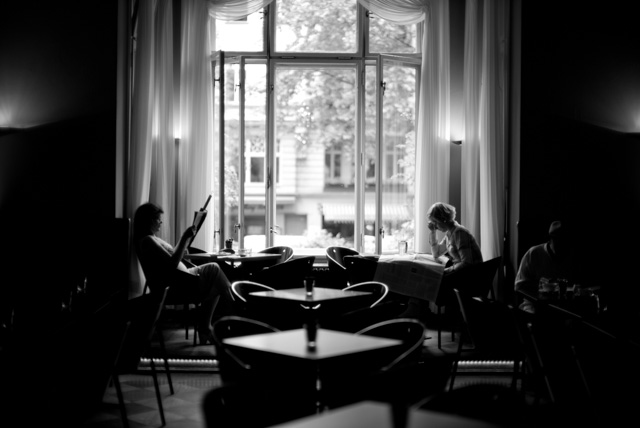
Litteraturhaus Berlin. Leica M 246 with Leica 50mm Noctilux-M ASPH f/0.95. © 2016 Thorsten Overgaard.
I have had a crush on the Leica MP for a few years. Every time I walk into the Leica Store Ginza in Tokyo where they have the Leica MP on display next to the other new models, I get into this sentimental mood. It's such a beautiful camera, probably the most beautiful Leica every made. The glossy black paint with the chrome details blinking like diamonds.
That is one camera I would love to use, but also the one camera I know I wouldn't use. The work of getting film stock, shooting it in just that film stocks style, developing it and get it scanned in proper quality and size. No, it's not going to work.
But it's a damn beautiful camera and I'm always 45 seconds from buying one.

New York. Leica M 246 with Leica 50mm Noctilux-M ASPH f/0.95. © 2016 Thorsten Overgaard.
It's a feeling you sometimes have to react to; succumb and buy one. Get over it while you still have the feeling, even though you know it will be a short pleasure. Better than to never succumb and always dream of that camera you never got because you were too rational.
Reviewing what you get
I find that the final judgment of my lenses and cameras is often when I review my results after a while.
On the Leica M vs. the Leica SL, I felt that the Leica SL was a great tool. I loved using it, but when I reviewed some magazine front-page shoots I had done, I realized that in one case none of the SL photos were amongst my final edits, and in another shoot only one of almost twenty final photos were from the SL. Despite the enthusiasm I felt while using the camera, the review of what got used showed that it wasn't my tool. So that was the Leica SL.
On the Leica M 240 vs. the Leica M 246 (as well as the Leica M9 vs. the Leica M Monochrom), I have done some remarkable photographs with the monochrome cameras. Some of them simply because the monochrom camera injected the enthusiasm necessary to go out and make them (an important feature of any equipment: that it makes you want to create stuff). But with many monochrome images I've made, that are really good, the most common question asked is: “Is that made with the Monochrom?” The stats don't lie: No, they were made with the Leica M 240 (or Leica M9).
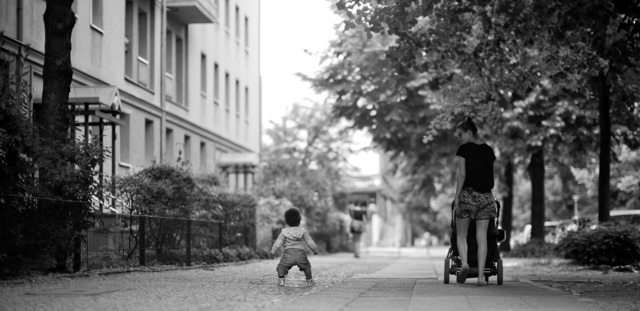
Berlin. Leica M 246 with Leica 50mm Noctilux-M ASPH f/0.95. © 2016 Thorsten Overgaard.
For me, the success of a monochrome image is not the camera tool, it's the light. I often wonder if I see images in black & white or color when I take them, and I still keep wondering, because I think I see emotions (of soul and light) rather than monochrom tonality vs. colors. I don't see what I see as a traditional image; what I see is mostly the emotion. Defined more in detail, I see light, bokeh, hope, truth, atmosphere and the soul of people.
It doesn't matter if it's monochrome or colors when I take it, that is a later decision in the editing phase. Should I make a copy in color or black & white – or one of each?
I acquire equipment to get it to work, not to test it, and then to get them out of my system if it wasn't the optimum tool. The reoccurring thought of a lens or camera makes me buy one even if I already know I will get over it. If it works, it's great, it if doesn't, the process of using it will get me the experience of how and why it doesn't work. Mystery solved; I don't have to wonder how it would have worked if I got it.
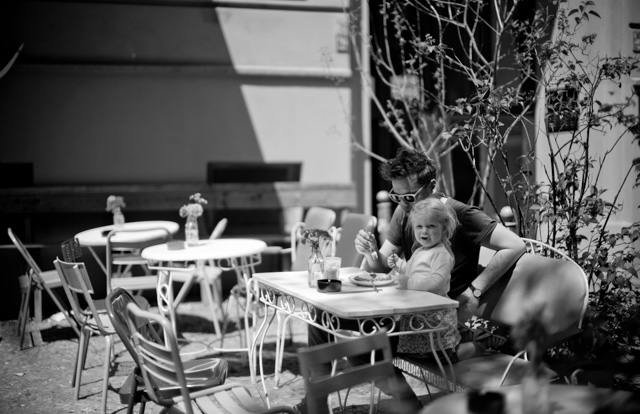
Daughter with father, Berlin. Leica M 246 with Leica 50mm Noctilux-M ASPH f/0.95. © 2016 Thorsten Overgaard.
Buying and selling cameras and lenses
I am not a collector. I don't have an ambition to have one of each, I don't even try.
I get nostalgic, however, so equipment that I have had a good time with, I will keep as a fond memory or a good friend. Often I find it easier to keep a thing rather than trying to sell it, though I do want to clean out things I don't use or need.
In the case of the Leica M 246, I really wanted to get rid of the camera as a matter of personal integrity. They call this a monochrome camera?
Man, come on!
Finally, a few days before I was going on a longer travel someone suggested to trade for a lens. I hesitated because I didn't need the lens, but then decide grab the chance to get the M 246 out of my life for good.
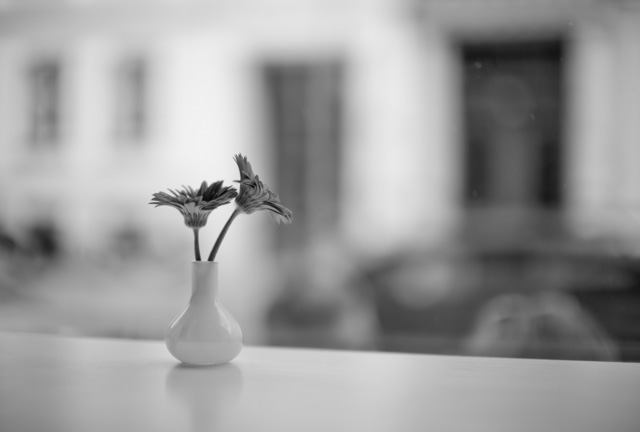
Leica M 246 with Leica 50mm Noctilux-M ASPH f/0.95. © 2016 Thorsten Overgaard.
A good camera is a tool and is made to help you as an artist or photographer to perform your vision. So is the majority of Leica lenses and cameras. But the Leica M246 is a consumer good in that it is a quick fix of an existing camera to make it look like something you may desire.
The Leica M 246 is “the next model” in an expected series of improvements.
I can say all this because this is what I honestly feel. I don't get freebies that make me feel I should do something for it. I am a customer like you, and this camera wasn't good enough. I bought one, and I sold it again.
The hope for the Leica M10-P Monochrom
The Leica M Monochrom was an idea to make a monochrom camera on top of the success of the first full-frame Leica M, the Leica M9. Amongst different possibilities to make a monochrome sensor, it turned out that if Leica removed the color filter that sits in front of the Leica M9, and fine-tuned the firmware, it was a remarkeable monochrome camera. If it hadn't been that easy to use the same body and the almost same sensor, it's unlikely the world would have seen a Leica M Monochrom camera.
When the Leica M240 came and it was time to make a monochrome version of the M240, somebody decided to simply do the same: Remove the color filter and call it Leica M246 Monochrom. But just beacuse it worked with the previous model to remove the color filter, doesn't mean it will work in the M240. And it didn't. The brighter tones just doesn't work.
It's very likely that the Leica M10-P will be presented in a monochrome version. Perhaphs even without a screen (as the Leica M10-D). But most likely Leica Camera AG will take more care to make it a real monochrome experience, rather than just a Leica M10-P (or Leica M10-D) without a color filter.

Fashion in New York. Leica M 246 with Leica 50mm Noctilux-M ASPH f/0.95. © 2016 Thorsten Overgaard.
| |
|
|
|
|
| |
Buy my "New Inspiration Extension Course"
|
|
| |
|
|
|
|
| |
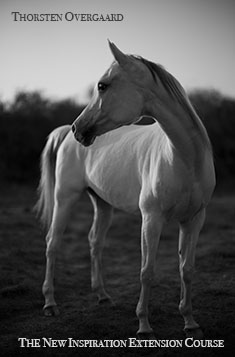
Need more info?
Read this article. |
|
Get inspired and rebooted!
This extension course if made for you! It can be done at home and travel at your own pace. I have taught workshops for years and the Overgaard New Inspiration Extension Course is my experience compressed to a package of training, articles, drills, assignments and video tutorials that will inspire you and take your photography to the next level! For a limited time my course includes something you cannot get anywhere or anytime else:
A portfolio-review by Thorsten Overgaard.
| |
|
|
| |
"The Overgaard
New Inspiration
Extension Course"
For computer and iPad. 181 p eBook. |
|
| |
Only $798 |
|
| |
|
|
| |
 |
|
| |
|
|
| |

|
|
| |
|
|
Order now - Instant delivery. |
|
| |
|
|
|
|
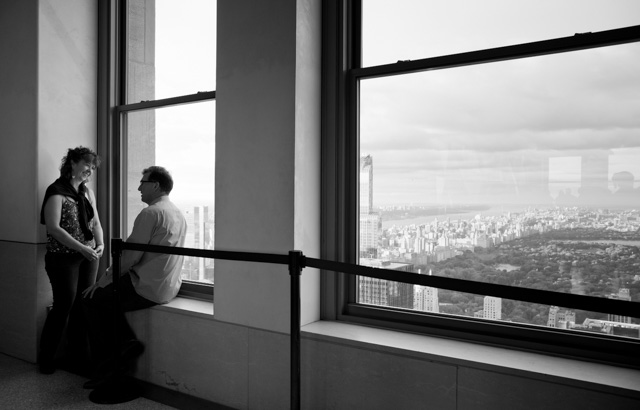
Above Central Park in New York. Leica M 246 with Leica 28mm Summilux-M ASPH f/1.4. © 2016 Thorsten Overgaard.
How the Leica M 246 might be a good camera
It is possible that the Leica M 246 would work better in the tonality if used with an orange, yellow or green filter at all times, because that might change the highlights. I didn't go there; it wasn't what I wanted to do. It's just a thought if you like the Leica M 246 Monochrom and want to experiment to improve the tonality.
I think blue filter might make things worse because blue usually would make red tones darker and make blue skies and bluish reflections even brighter.
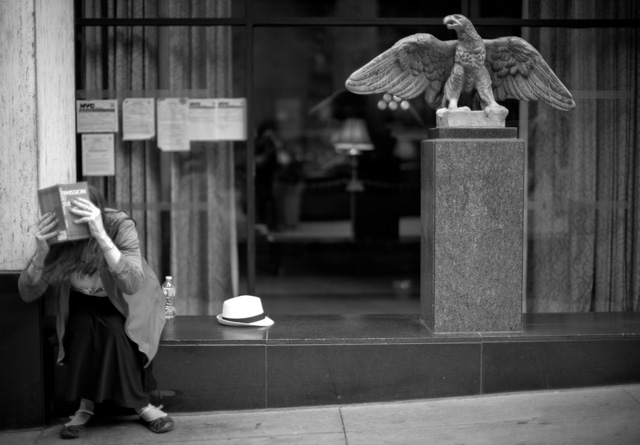
It went well til she decided not to be photographed and used her book, "Permission to Believe" as a shield. Leica M 246 with Leica 50mm Noctilux-M ASPH f/0.95. © 2016 Thorsten Overgaard.
JPG vs DNG
The Leica M 246 comes default set to JPG only. You will be missing out on the possibilities to optimize the image if you don't change that to DNG.
In the Leica M 240 I have set the camera to DNG + JPG Fine at the same time (the DNG being color, the JPG set to Black & White).
In the Leica M 246 there is not much point in keeping the JPG files. The DNG will always look better after some light editing.
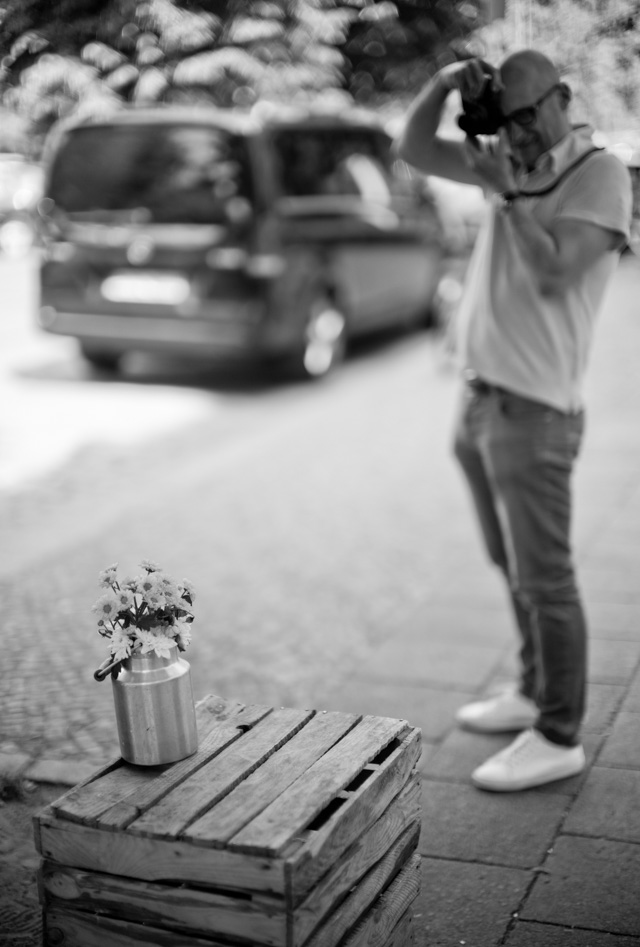
Finding the magic of light in Berlin. Leica M 246 with Leica 50mm Noctilux-M ASPH f/0.95. © 2016 Thorsten Overgaard.
Dynamic range of the Leica M 246
The Leica M 246 has a similar dynamic range as the Leica M 240 for the JPGs – around 9 stops at ISO 400 to ISO 1600, and dropping to 6-7 stops at higher ISO speeds.
For the DNG files, the dynamic range of the Leica M 246 is generally 1-2 stops less than the Leica M 240. The Leica M 240 has a dynamic range of 11-13 at ISO 200 to ISO 1600, the Leica M 246 has a dynamic range of 10-11 at ISO 400 to ISO 1600 (and then drops steadily down to 6 stops at ISO 25600 – not unusual and not unlike other cameras at all).
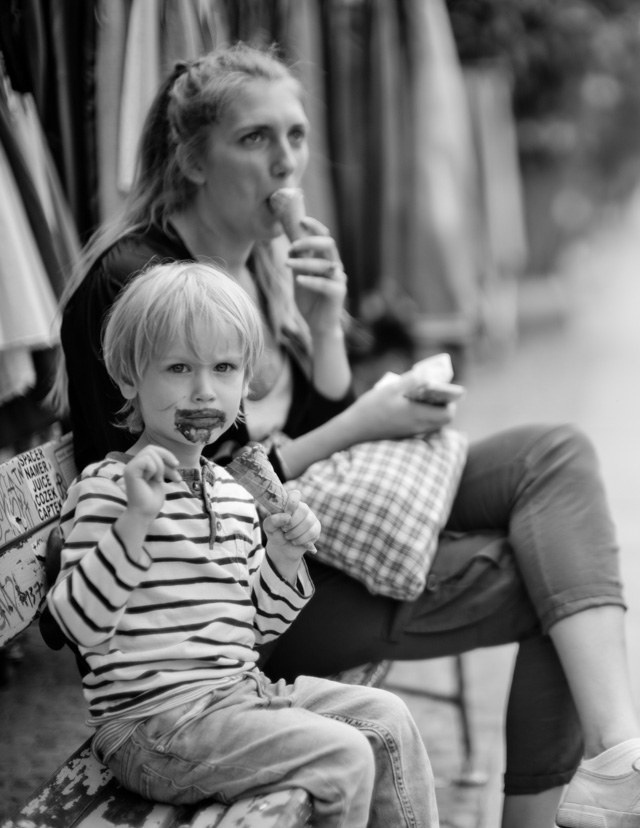
Mother and son on a mission impossible in Berlin. Leica M 246 with Leica 50mm Noctilux-M ASPH f/0.95. © 2016 Thorsten Overgaard.
The Leica M 240 performs a 13 stop dymanic range at 400 ISO compared to the 11 stops of the Leica M 246 at ISO 400.
You can see comparison of the Leica M 240, Leica M 246 vs. Sony and Nikon here.
That explains some of the trouble. But I tend to find that the Leica M 246 dynamic range is geared towards the darker tones and black. That's where the Leica M 246 performs well.
| |
|
|
|
|
|
|
| |
Buy the new eBook
"Composition in Photography"
by Thorsten von Overgaard |
|
| |
|
|
|
|
|
|
| |
Composition in Photography
- The Photographer as Storyteller
This book will inspire your photographic eye and make you wonder about all the possibilities you can now see.
In this exciting new book Thorsten Overgaard expands and simplifies the subject of composition. It's elevated from geometric patterns to actual storytelling by practical use of space, rhythm, time, colors, emotions and intuition in your photography.
- The Basics of Composition.
-
Composition in the Third Dimension.
- Picture Stories.
- Accenturating with Light.
- Photograph as a Melody.
- Which lens are you?
- Fear of sharpness?.
- Vanishing Point.
- The most important
element of composition
- What is the unknown secret
why it is you mostly can't get
the Rule of Thirds to work?
- How does a camera see
differently than the eye?
- What does quantum physics and
photography have in common?
- What's the greatest adventure you can
set out on in photography these days?
- A Sense of Geometry.
Only $398.00.
Order now. Instant delivery.
864 pages. 550 Illustrations. |
|
"It’s your best work so far"
"I’m being gently led"
" I love this book!!!"
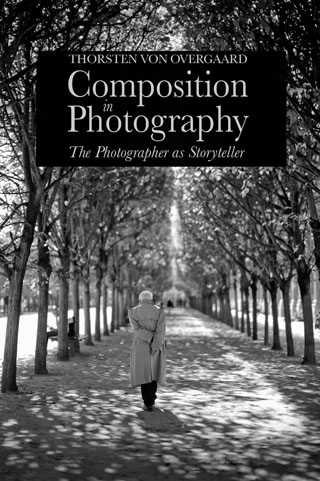
"The book is incredible"'
"It’s like therapy for the human spirit."
"Beautiful and inspiring"
"Full of practical advice
and shared experience"
'I love how hands-on and
laid back Thorsten's witting style is"
"Inspiring"
"Intense and thought-provoking" |
|
| |
 |
 |
|
100% satisfaction of money back. |
|
| |
|
|
|
|
|
|
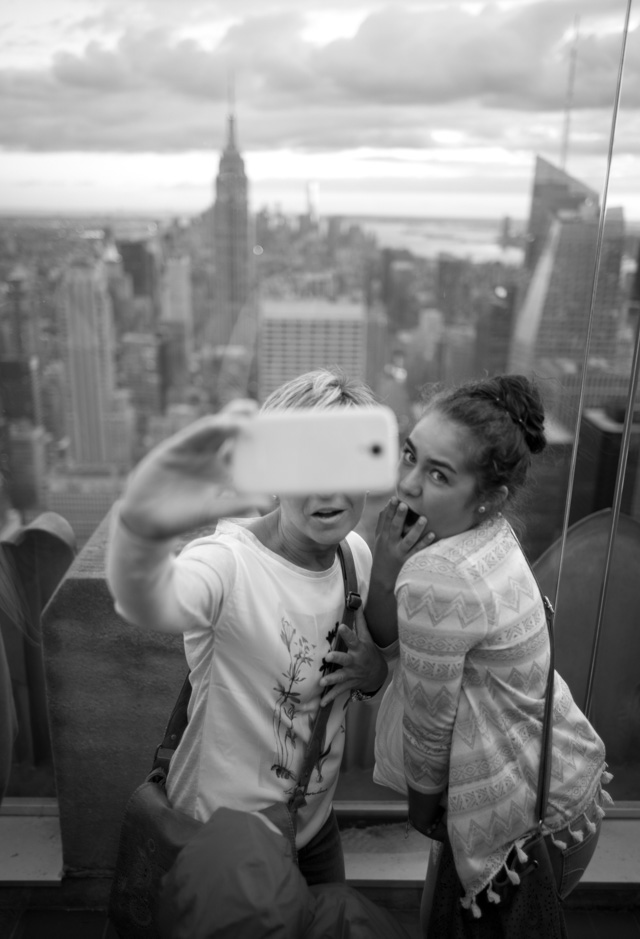
The Vogue Pose. Leica M 246 with Leica 28mm Summilux-M ASPH f/1.4. © 2016 Thorsten Overgaard.
The Lightroom "Process 2010" vs "Process 2012"
In my review of my own pictures, I found the Process 2010 (later renamed to Process 2 in Lightroom Classic CC) to produce more “traditional style pleasing” results for me.
What happened was this: When Adobe released Lightroom 4, they also released a new Process 2012 (later renamed to Process 3, 4 and 5 in Lightroom Classic CC) which was meant to utilize the wider dynamic range of newer sensors. Where Process 2010 offered adjustments from 1 to 100, the Process 2012 offered adjustments from -100 to +100. So far, so good.
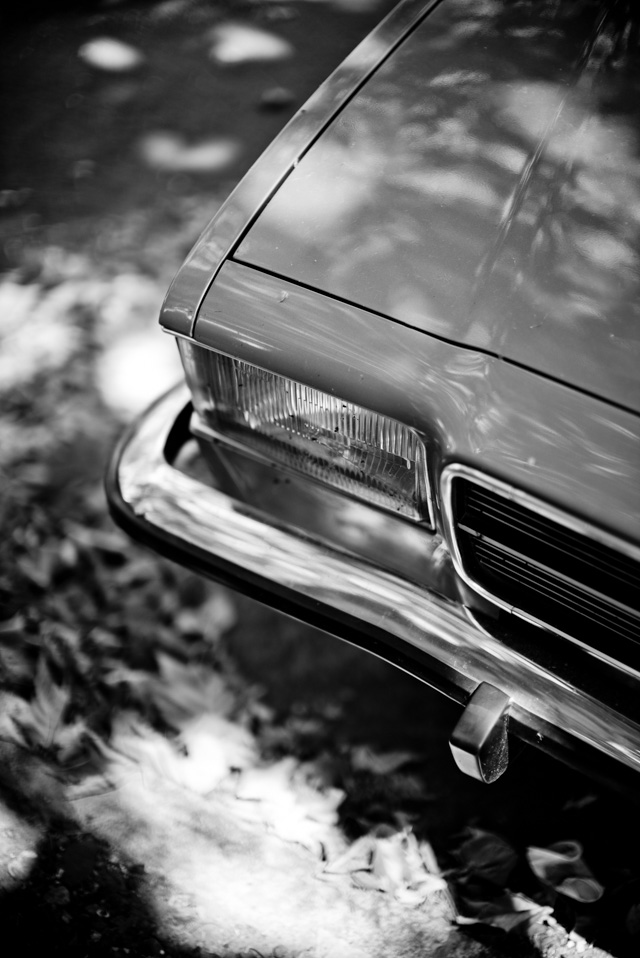
East Berlin. Leica M 246 with Leica 50mm Noctilux-M ASPH f/0.95. © 2016 Thorsten Overgaard.
But in the “upgrade” Adobe also changed the way the tools worked, and in my opinion that resulted in a “plastic and digitized” look as soon as you adjusts the sliders just a bit. For example the White adjustment makes no sense. Adjusting it +10 or +20 the white areas already washes out. So why have the possibility to add +100 white?
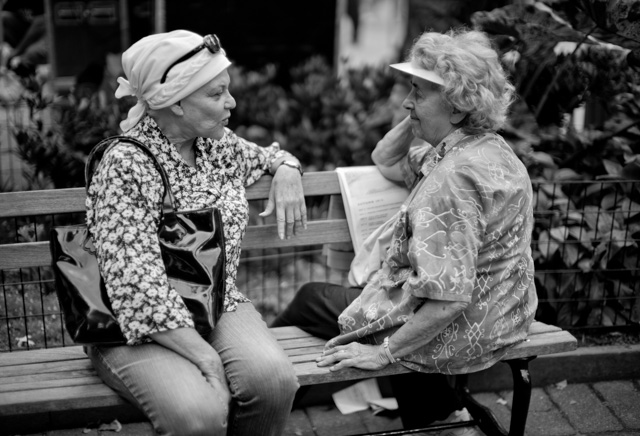
Girl talk. Leica M 246 with Leica 50mm Noctilux-M ASPH f/0.95. © 2016 Thorsten Overgaard.
But mainly the Shadows control is much better in the Process 2010 than in the Process 2012. That is one I use a lot to beat out more shadow details in most pictures (and then I increase Black to get back the contrast; but now with more shadow details.

Family selfie with Empire State and Manhatten in the background.Leica M 246 with Leica 28mm Summilux-M ASPH f/1.4. © 2016 Thorsten Overgaard.
I cannot tell you what is right or wrong in this. What is right for me is that I test the Process 2010 and Process 2012 for a while with any new camera sensor, and then I make a decision which to use.
So far Adobe Lightroom is backwards compatible so you can choose Process 2003, Process 2010 or Process 2012 in any version of Lightroom from Lightroom 4 to Lightroom 2015CC/Lightroom 6.x.
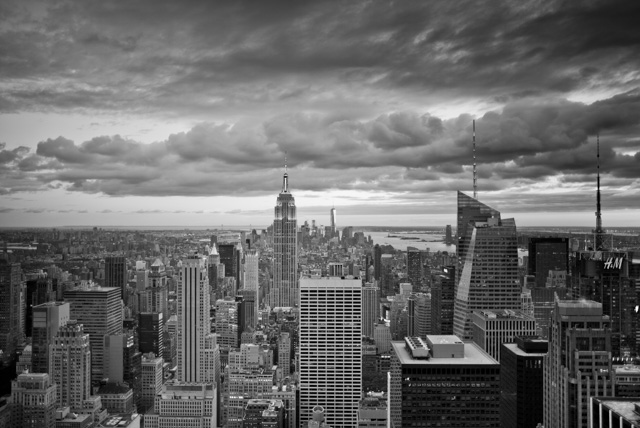
New York skyline. Leica M 246 with Leica 28mm Summilux-M ASPH f/1.4. © 2016 Thorsten Overgaard.
How to set up Process 2010 (Process 2 in Lightroom CC)
| |
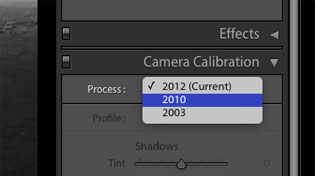 |
| |
You can change from Process 2012 to 2010 in the bottom right corner of Lightroom (in Develop mode) |
| |
|
You can change the Process in Lightroom from the default Process 2012 (used in Lightroom 4, 5 and 6 and the Lightroom CC fro the Adobe Creative Cloud) to the previous Process 2010 (used in Lightroom 3).
This is done in the bottom right corner of the control panels in Lightroom, and with Sync you can set a whole set of images to be Process 2010.
Setting up a preset for import so all images are Process 2010: You can also edit an image in Lightroom wher you only change the process to Process 2010 and then save it as a User Preset. This way, when you import new images from the SD-card you can set the import to use that preset. This way all images will be set to Process 2010 from beginning.
| |
|
|
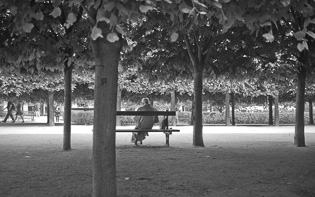 |
|
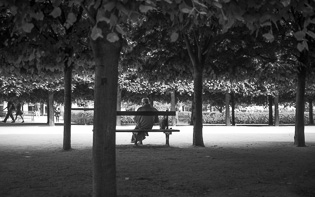 |
| Process 2010 shadow details at maximum using Fill Light in Lightroom 6. |
|
Process 2012 shadow details at maximum using Shadows in Lightroom 6. |
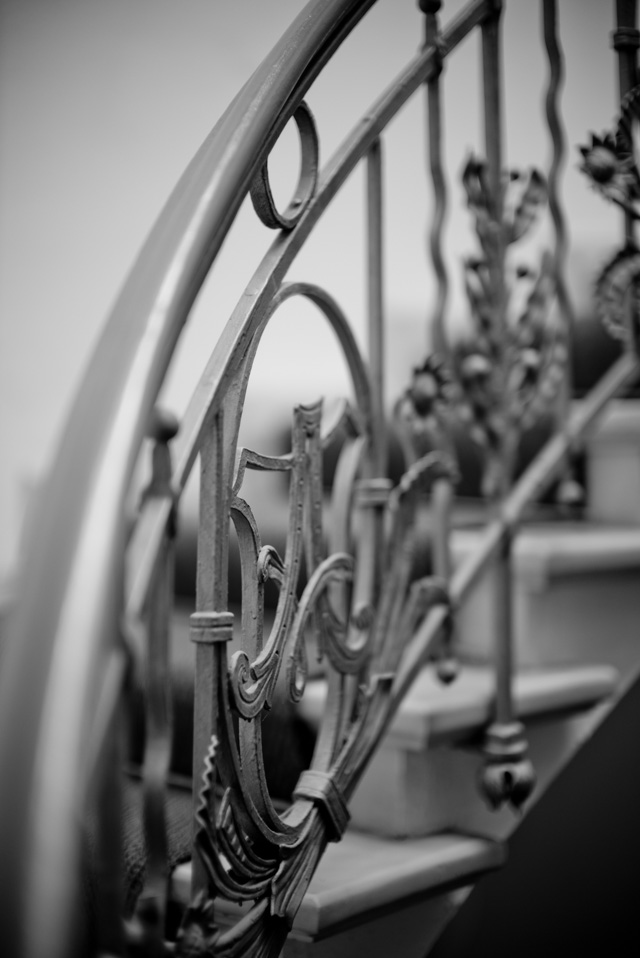
East Berlin architecture. Leica M 246 with Leica 50mm Noctilux-M ASPH f/0.95. © 2016 Thorsten Overgaard.
Advertisement:

Leica M246 Monochrom Limited Editions
As of May 2019, the Lenny Kravitz Design "Drifter" limited edition with a 28/2 and 75/2 lens was released. A refreshing new brown color.
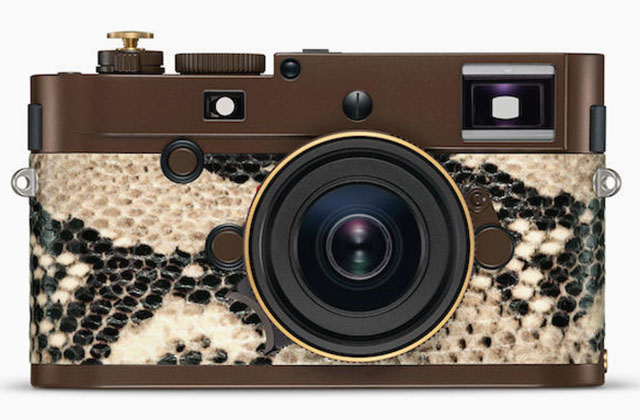
Lenny Kravitz Design "Drifter" limited edition.
Leica Monochrom Masterclass
For more info on Paris Masterclass, have a look here:
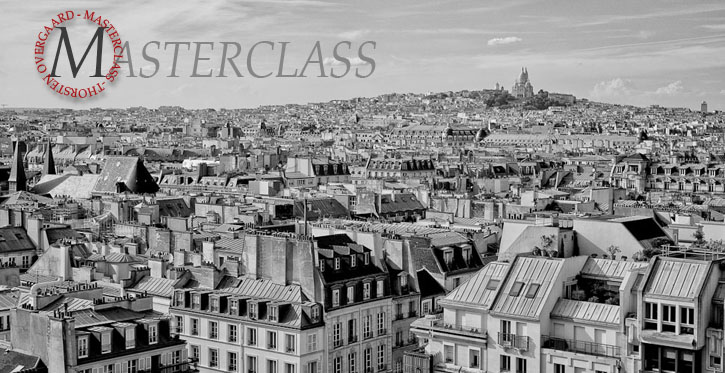
The Thorsten Overgaard articles on the Leica M 246
Here's the complete overview of my articles on the Leica M 246. Enjoy!
Comments..?
As always, feel free to send me an e-mail with comments, suggestions, ideas, corrections
| – Thorsten Overgaard. #1733-1116 |
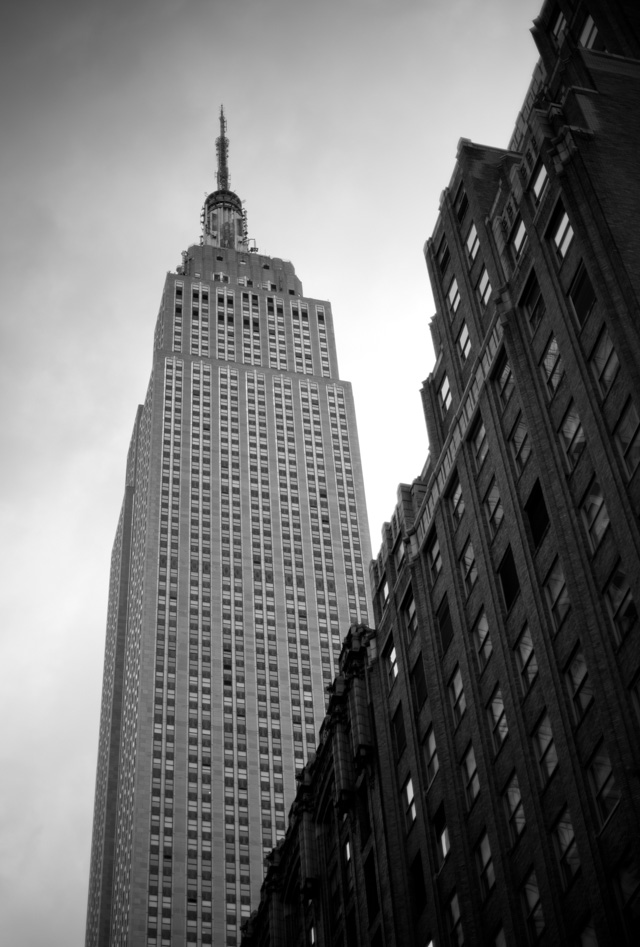
Empire State Building, New York. Leica M 246 with Leica 50mm Noctilux-M ASPH f/0.95. © 2016 Thorsten Overgaard.
Leica M 246 Definitions
Aperture = The f/ stop on the camera that regulates how much light passes through the lens. On a f/1.7 lens the lens is fully open" at f/1.7. At f/2.0 the aperture inside the lens make the hole through the lens smaller so only half the amount of light at f/1.7 passes through. For each f/-stop (4.0 - 5.6 - 8.0 - 11 - 16) you halve the light. The aperture of the lens is basically the focal length divided with the f/-stop = size of the hole (28mm divided with f/1.7 = the hole is 45 mm).
ORIGIN: Late Middle English : from Latin apertura, from apert- ‘opened,' from aperire ‘to open'.
ASPH = stands for "aspheric design".
Most lenses have a spherical design - that is, the radius
of curvature is constant. These are easy to manufacture by
grinding while "spinning" the glass. This design
however restricts the number of optical corrections that can
be made to the design to render the most realistic image possible.
ASPH lenses, however, involve usually 1 element that does
*not* have a constant radius of curvature. These elements
can be made by 1) expensive manual grinding, 2) molded plastic,
or 3) Leica's patented "press" process, where the element
is pressed into an aspherical ("non-spherical")
shape. This design allows Leica to introduce corrections
into compact lens designs that weren't possible before. Practically,
the lens performs "better" (up to interpretation)
due to increased correction of the image, in a package not
significantly bigger than the spherical version. The Leica Q 28mm lens has 3 aspherical elements out of 11 elements in the lens. Most Leica ASPH lenses from Leica has 1 or 2 aspherical elements.
| |
|
|
 |
| Normal speric lens (grinded) |
|
ASPH (note the shape of the glass as result of pressing rather than grinding) |
Sphere: ORIGIN Middle English : from Old French espere, from late Latin sphera, earlier sphaera, from Greek sphaira "ball".
Banding = Noise in digital images. Horizontal lines in a horizontal pictures (if the camera is in portrait mode/vertical, the lines will be obviously be vertical). It's simply noise; the result of uncontrolled algorithms working overtime with an image the sensor really can't see because it's very dark. (If your image have vertical lines in it, it is more likely that the sensor needs remapping).
Bokeh = The visual quality of the out-of-focus areas of a photographic image, especially as rendered by a particular lens: It's a matter of taste and usually photographers discuss a 'nice' or 'pleasant' bokeh (the out-of-focus area is always unsharp why the quality discussed is if one likes the way it renders or not by a particular lens). ORIGIN from Japanese 'bo-ke' which mean 'fuzzines' or 'blur.'.
C = Continuous shooting. When the ring by the Shutter Release on top of the camera is moved from OFF to C, the Leica M 246 takes series of images as long as the shutter release is pressed down (3.5 frames per second).
CMOS sensor (as used in Leica Q, Leica M 246, Leica M 240, Leica X, Leica D-Lux, etc)
= (Complimentary Metal Oxide Semiconductor) chips use transistors at each pixel to move the charge through traditional wires. This offers flexibility because each pixel is treated individually. Traditional manufacturing processes are used to make CMOS. It's the same as creating microchips. Because they're easier to produce, CMOS sensors are cheaper than CCD sensors. CMOS allow Live View and use less energy than CCD.
DNG = Digital Negative, an open standard developed by Adobe. It is a single file that contains the raw image data from the sensor of the camera as well as date, time, GPS, focal length, settings, etc.
The alternative is a RAW file + XLM file where the RAW file contains the image information and the XML contains the rest of information about where, how and when the picture was taken.
A Camera Raw profile (that is specific for that camera) in the computer helps the software program, for example Adobe Lightroom, to translate the RAW data into the image.
| |
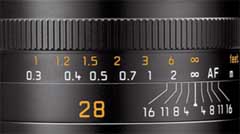 |
| |
DOF scale on the lens |
| |
|
DOF = Depth of Field. This is how much of the image will be in focus. The measurement on top of the lens lens shows lines for each f-stop that indicates from which distance to which distance the image will be sharp. Shallow DOF is a generally used term in photography that refer to lenses with very narrow focus tolerance (which can be used to do selective focus; making irrelevant subjects in the foreground and background blurry so only the subjects of essence are in focus and catches the viewers eye).
EVF = Electronic ViewFinder. The EVF-2 is the model that can be used on the Leica M 246 (and Leica M 240 and Leica X)
Exposure Bracketing = The possibility to set the camera to automatically record a series of images where the exposure is above and below what the camera measures. The idea is that at least one of the images will be correctly exposed.
| |
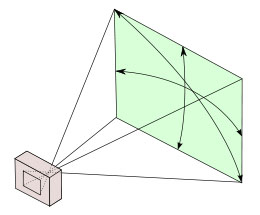 |
| |
A 28 mm lens has a 74° viewing angle |
| |
|
Focal length = For example 50mm or 28mm. It originally referred to the distance from the sensor (or film in older days) to the center of focus inside the lens. Nobody uses that measurement, except those who construct lenses! For users of lenses, focal length refers to how wide the lens sees. The viewing angle, which is often given in for example 90° viewing angle for a 21mm lens, 74° viewing angle for a 28mm lens, 6° viewing angle for a 400mm lens, etc.
Each human eye individually has anywhere from a 120° to 200° angle of view, but focus only in the center.
Full Frame (FF) = The size of the sensor is 24 x 36mm which is the format Oskar Barnack and Leica Camera AG invented with the first Leica that was introduced in 1925. Many other formats invented since, such as APS, APS-C and all usually refer to Full Frame ratio, by which it means what size they have compared to Full Frame.
| |
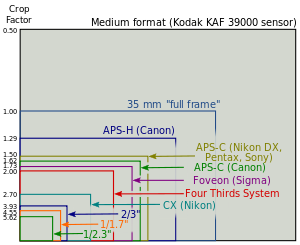 |
| |
Full Frame is "king of photography" |
| |
|
The 24 x 36mm Full Frame format is so "king of photography" that it has continued to be the ideal for all cameras. Besides this, there exists Large Format cameras such as 4x5" (100 x 125 mm) and Medium Format 6x6 (60 x 60mm amongst other sizes in that area).
ISO = Light sensitivity of the camera sensor is given in ISO (International Organization for Standardization). It's a standard that was used in film and is now used in all digital cameras also. The base ISO for the Leica Q sensor is 100 ISO which means that this is what the sensor "sees". All other levels are computer algorithms calculating the effect as if the sensor could "see" more (hence noise at higher ISO levels).
ISO goes in steps of doubling: When the ISO is raised from 100 ISO to 200 ISO, the camera only need half the amount of light to make a picture. For each step in ISO to 400, 800, 1600, 3200, etc the light sensitivity is doubled for the sensor (and the camera sensor only need half the light of the previous ISO to record the same image).
JPEG = A standard for picture format made in the 1990's by Joint Photographic Experts Group). Mostly referred to as JPG as in L1003455.JPG which would be the name for a JPG file from the camera.
Summilux = Refers to the maximum lens aperture - normally f1.4 , "-lux" added for "light" (ie. the enhanced light gathering abilities).
Leica = A compound word derived from " (Lei)tz" and "(ca)mera". Apparently they were originally going to use "LECA", but another camera company already used a similar name in France, so they inserted the 'i' to prevent any confusion.
Lens hood = A tube or ring attached to the front of a camera lens to prevent unwanted light from reaching the lens and sensor. ORIGIN Old English hod; related to Dutch hoed, German Hut 'hat,' also to hat.
Level Gauge = This is a tool in the viewfinder to see if you hold the camera 100% horizontal and/or vertical. You can turn it on in the Menu. On the Leica M 246 you make it visible in the viewfinder by pressing the INFO button (the round one on the back of the camrea by your thumb).
Live View = This is the ability to see the image the sensor see, live, via the screen of a digital camera, or via an electronic viewfinder (EVF).
Meßsucher (rangefinder or distance finder) = Mess = range, sucher = finder. It is always correctly written with the "ß". There are technically not three "s", rather the "ß" and one "s" because it is a word constructed by the combining of two precise words.
ND = Neutral Density filters are grey filters that functions as 'sunglasses' for lenses. They simply block the light so that a lens can work at for example f/1.4 in sunshine. A 3-stop ND filter is recommend for most Leica lenses.
| |
 |
| |
You can change from Process 2012 to 2010 in the bottom right corner of Lightroom (in Develop mode) |
| |
|
Process = In Lightroom the Process 2010 and Process 2012 refers the the usual definition of process (a series of actions or steps taken in order to achieve a particular end. It comes from Latin, 'moving forward').
Lightroom could be said to be a process tool:
1) The first process is when you import the images and the file is recognized by the Camera Raw as from a camera model and that profile is applied to the image. That is simply a camera profile that knows that this number is this type of red for this camera, and so you see the image in the right balanced colors to begin with. That is the import process.
2) Then you make the choice if you wan to use Process 2010 or Process 2012 which is two different ways to process it further. Each have multiple tools it opens up for you to use and those tools are based on algorithms on how the image should behave on a tonal courve if you change contrast, exposure, etc.
3) The export is another process where you define what size and resolution you want, and then start a batch-process so Lightroom performs that process for you on a number of images in one batch (including where they should be saved).
There are numerous other processes that can be performed automatically, like writing keywords and changes into the XMP file of the image, backup to other drives, synchronization with databases, etc.
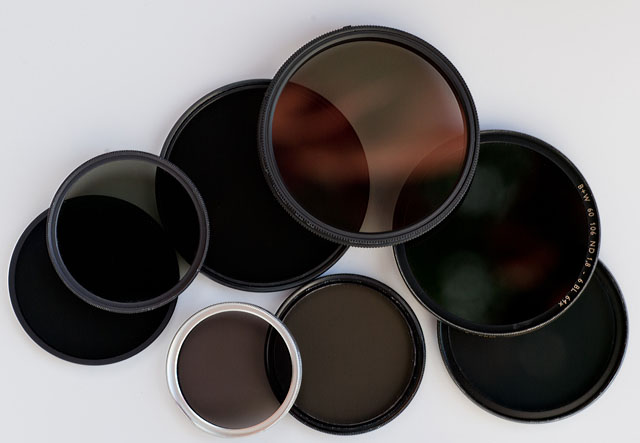
ND (Neutral Density) filters to put in front of lenses to reduce the amount of light that comes in. They don't have any other effect than that and doesn't change contrast, color or anything.
S = Single image. When the ring by the shutter release on top of the Leica Q is moved from OFF to S, the Leica Q takes one photo at the time (Single). The other possibility is Continuous (see above).
Spot meter = A light meter that measures a small spot of reflections from a surface. For example a SEI spot meter (Salford Electric Instruments) or Pentax one-degree spot meter. Many digital cameas has a built-in spot meter that measures just a spot of 1 to 3 degrees in the center fo the frame.
SLR = Abbreviation for Single-Lens Reflex; the lens that forms the image on the film/sensor also provides the image in the viewfinder via a mirror. The Leica Q has no traditional viewfinder and no mirror. the image seen in the EVF is what the sensor sees.
Summilux = Refers to the maximum lens aperture - here f1.4 , "-lux" added for "light" (ie. the enhanced light gathering abilities). In Leica terminology a Summilux is always a f/1.4 lens and a Summicron is a f/2.0 lens.
Viewfinder = a device on a camera showing the field of view of the lens.
1) A built-in viewfinder in a camera that simply show the frame you get when you look through the viewfinder.
2) A rangefinder viewfinder which is also used to focus the lens. In Leica M cameras two pictures has to meet and lay 'on top of each other' for the picture to be in focus.
3) An external viewfinder, usually on top of the camera in the flash shoe, so as to show the field of view of lenses wider than what the built-in viewfinder can show (15mm, 21mm, 24mm, 28mm etc viewfinders exist)
4) Very simple "aiming-devices" on top of a camera that is simply a metal frame without any optics. Just a frame, as for example very old cameras (the original Leica), or when using cameras in diving where you can't look through the camera.
5) A Electronic Viewfinder (EVF) that shows what the sensor sees "live".

XMP = (Extensible Metadata Platform), an ISO standard for the creation, processing and interchange of metadata for all kinds of resources. Usually when I refer to it, it is archiving the keywords, editings settings, camera brand, aperture speed, GPS data and any other metadata for an image, into the XMP file that is part of a DNG file (digital negative). In Lightroom and other editing tools it is important to make sure the data is saved to the file so they don't stay only in a software or catalog. When the metadata is inside the image file (in the XMP), it can be indexed, searched for and is also imported and shown as part of the iamge info whenever the image file is imported in another software. Where should you keep the info about a photograph? In the XMP, of course!
Index of Thorsten Overgaard's user review pages on Leica M9, Leica M9-P, Leica M-E, Leica M9 Monochrom, Leica M10, Leica M10-P, Leica M10-D, Leica M10-R, Leica M10 Monohcrom, Leica M11, Leica M11-D, Leica M 240, Leica M-D 262, Leica M Monochrom 246, Leica SL, Leica SL2, Leica SL2-S, Leica SL3, Leica SL3-S as well as Leica TL2, Leica CL, Leica Q, Leica Q2, Leica Q2 Monochrom, Leica Q3 and Leica Q3 43:
|
![]()
